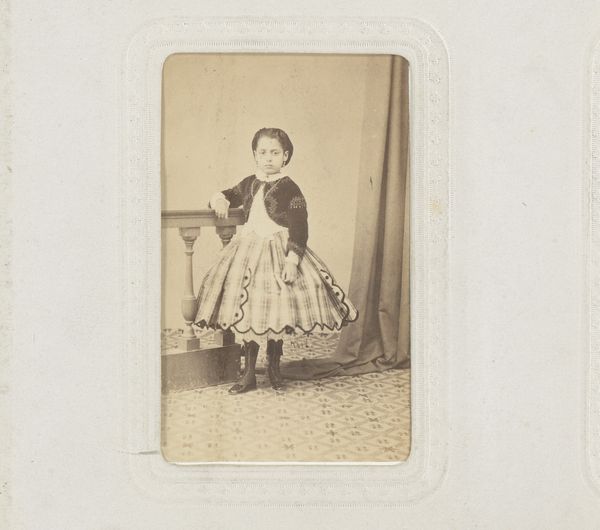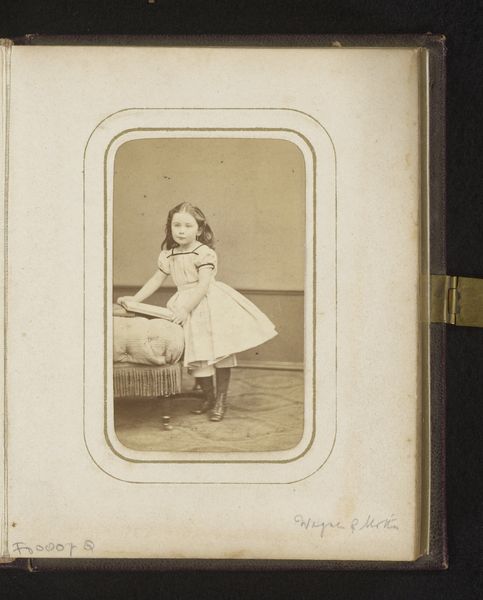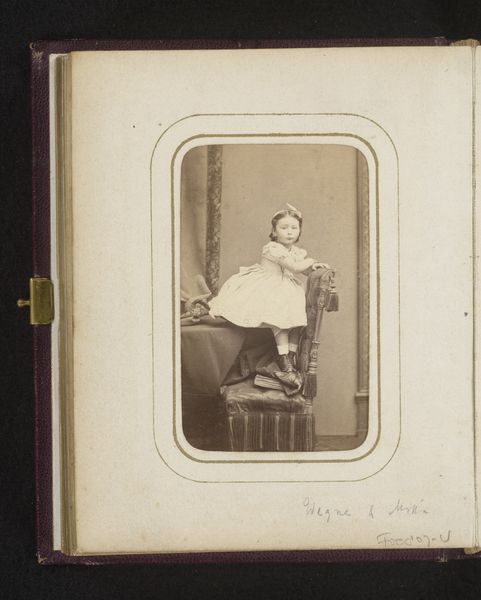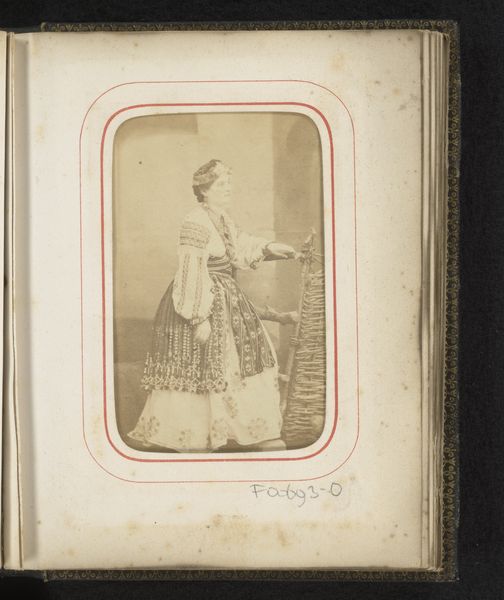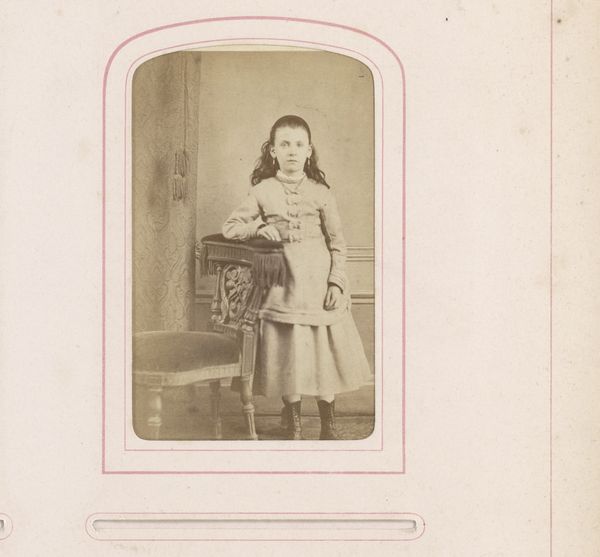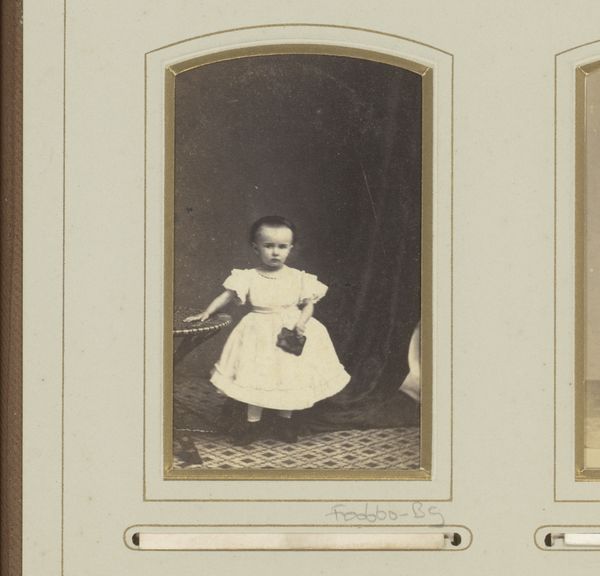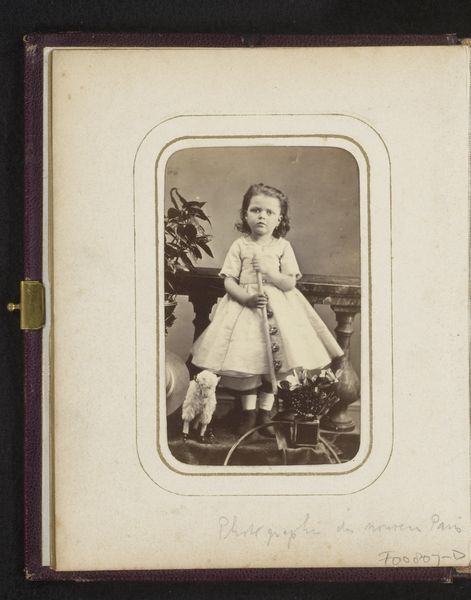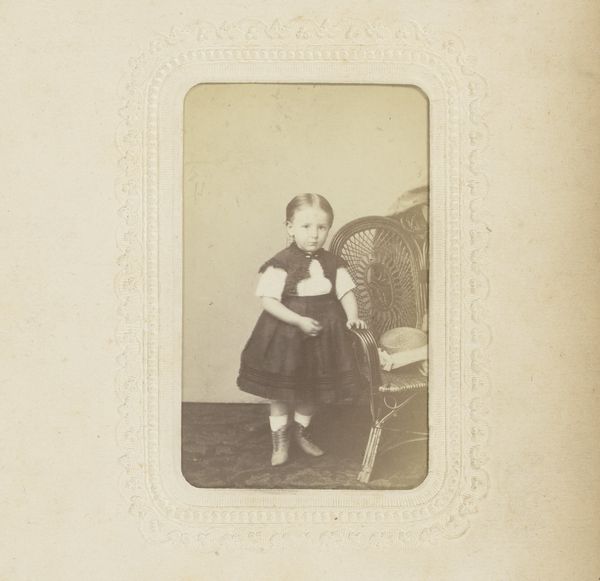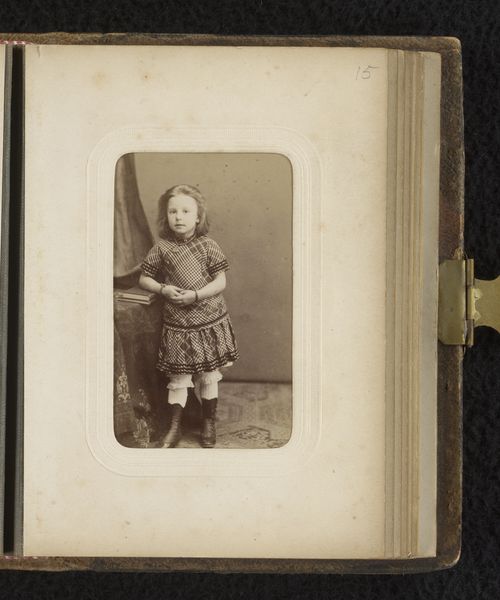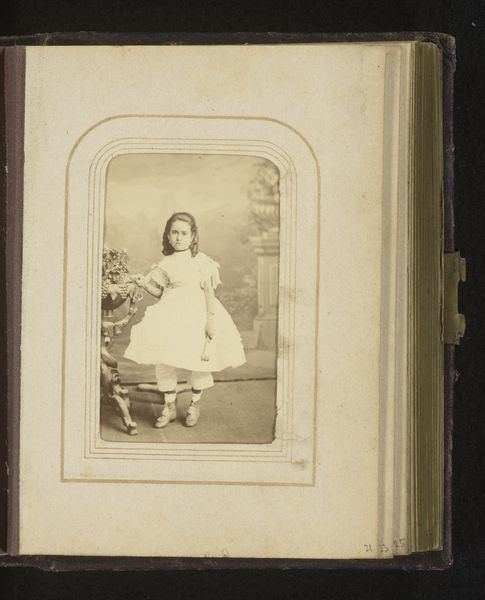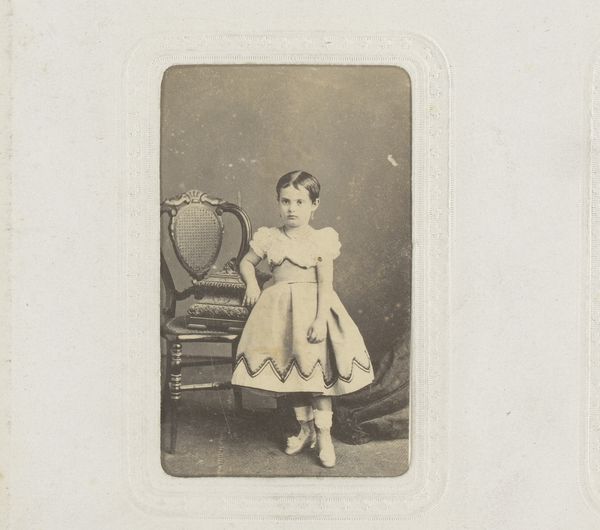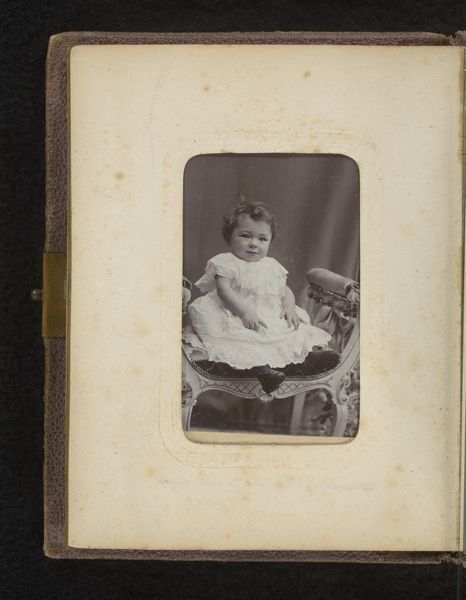
photography, gelatin-silver-print
#
archive photography
#
photography
#
gelatin-silver-print
#
19th century
#
genre-painting
#
realism
Dimensions: height 84 mm, width 52 mm
Copyright: Rijks Museum: Open Domain
Curator: Looking at this image, I can't help but think of lost dolls and whispered secrets. François Joseph Delintraz’s "Portret van een staand meisje met pop in de hand"—"Portrait of a Standing Girl with Doll in Hand"—really captures a moment suspended between childhood play and something a little deeper. It's from sometime between 1860 and 1900, created using the gelatin-silver print process. Editor: Immediately, it's the material weight of it. The texture of the gelatin silver process...it's not just capturing an image but producing a tangible object, designed for consumption and memory. Did they think about how those materials would evolve and degrade? What does that transformation tell us? Curator: It's an interesting thought. It does bring up questions of preservation. And of legacy too, doesn’t it? I mean, look at the girl's solemn expression; she almost seems burdened, holding her doll so stiffly. What narratives did people imagine as they created these images, I wonder? Editor: Burdened or empowered? I think of the labor involved. Someone created the doll, produced the girl’s clothes. Silver gelatin prints were easier to produce than previous methods, but they still required significant time. It’s mass production becoming increasingly affordable, yet imbued with cultural capital. Who could afford such portraits? How are we meant to view it? Curator: True. Those ripples in the lower part of the girl's dress feel almost sculptural because of it. What do you make of her relationship with the doll itself? Does it seem like a projection of herself, maybe? A practice run for something larger in her world, maybe future motherhood. Editor: It reflects, I think, a cultural projection onto the very nature of childhood. Consider this image not simply as capturing her individuality but also how children, girl children especially, were actively shaped and manufactured as a signifier. The clothing she has on suggests a particular economic bracket—dressmaking being labor that’s often rendered invisible. Curator: Yes, absolutely, that material culture really permeates our reading. I think what gets me is how evocative this very simple scene can be—an enduring window into both time and memory, personal and collective. Editor: Absolutely, and thinking about this work invites further scrutiny on production, labor and consumption...aspects easily overlooked, yet critical for a thorough engagement.
Comments
No comments
Be the first to comment and join the conversation on the ultimate creative platform.
